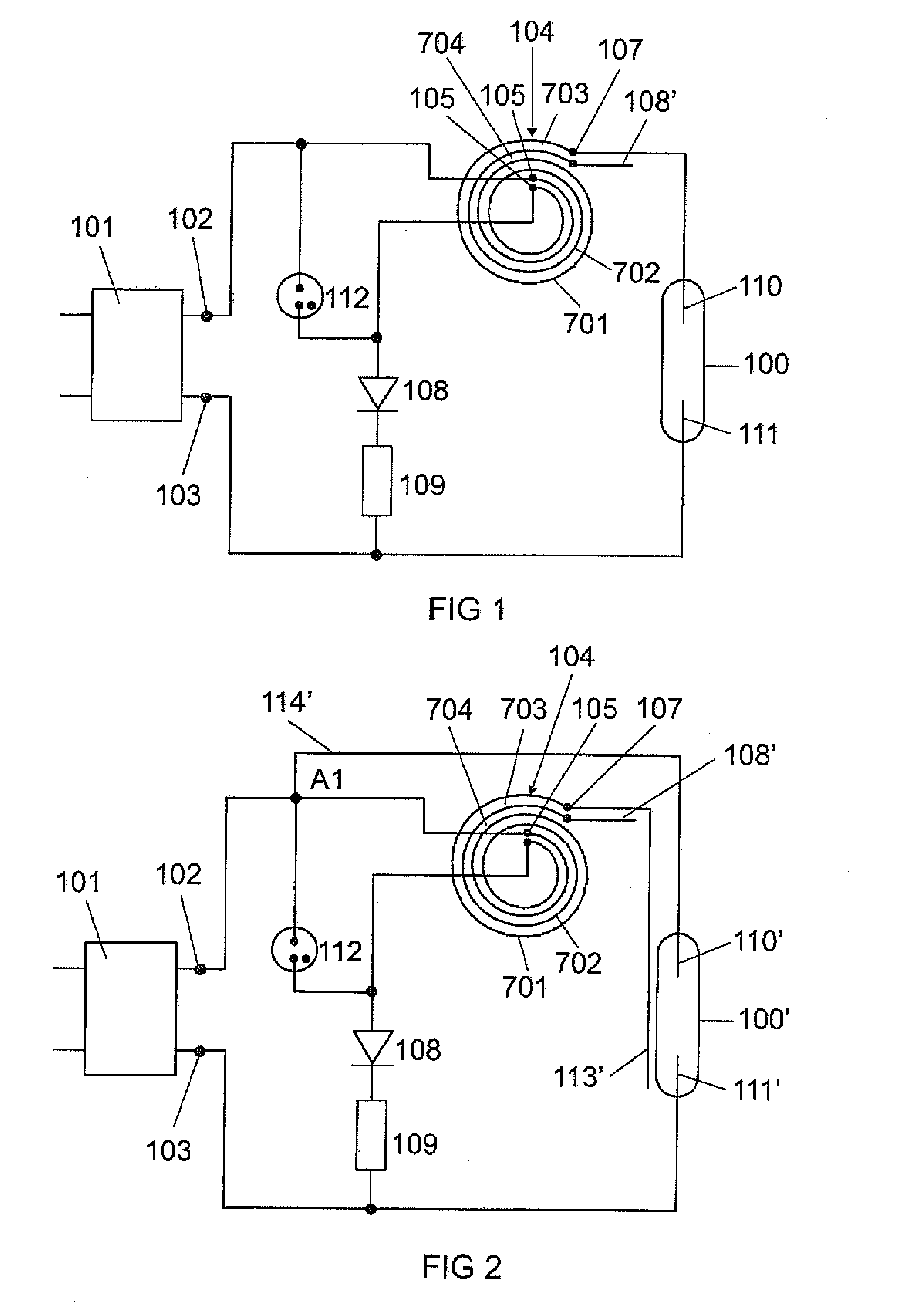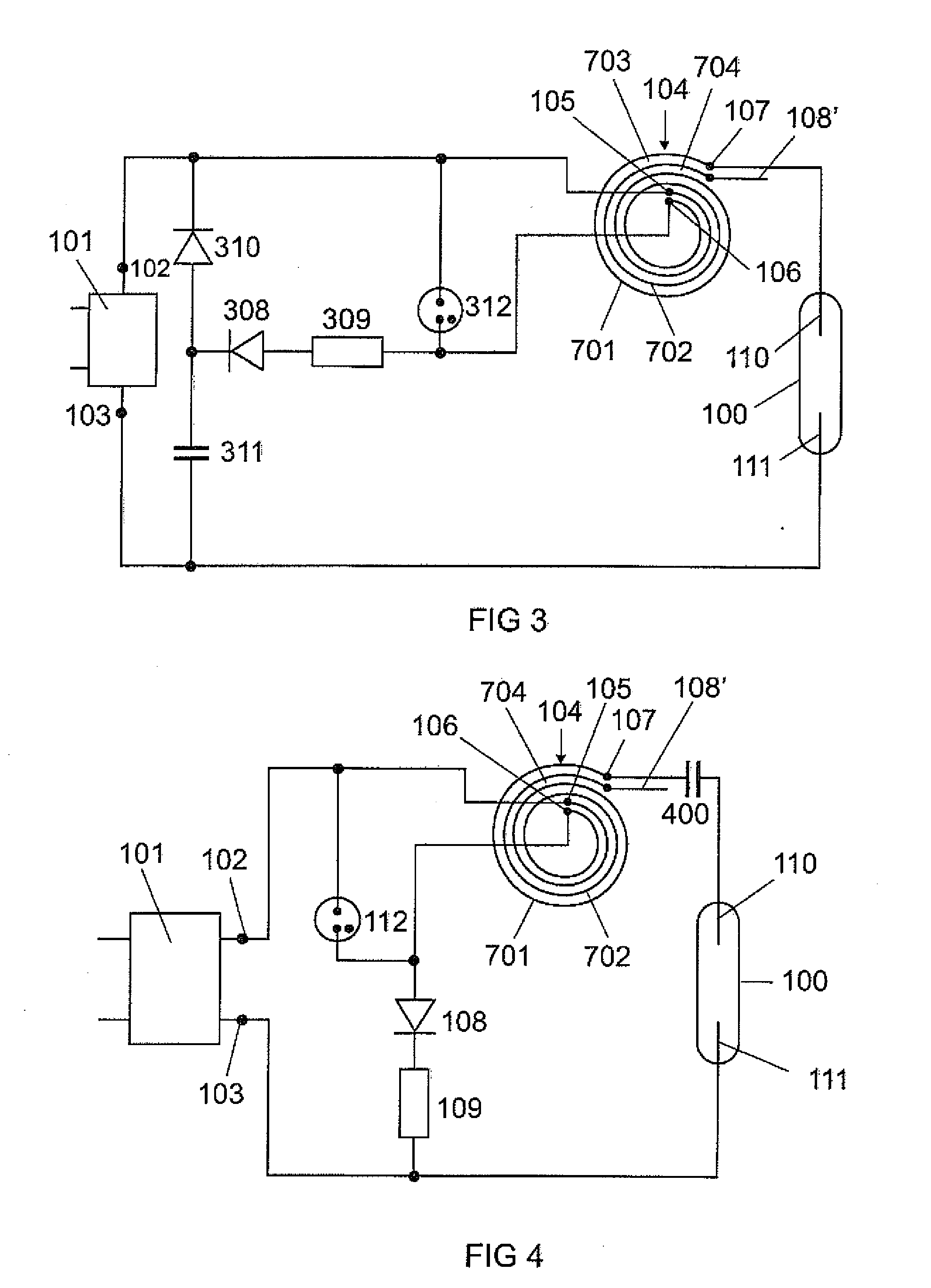Starting Apparatus for a High-Pressure Discharge Lamp, and a High-Pressure Discharge Lamp with a Starting Apparatus
a technology of high-pressure discharge and starting apparatus, which is applied in the direction of electrical apparatus, gas discharge lamp details, light sources, etc., can solve the problems of unsuitable radiofrequency range operation, low frequency, and operation voltage of ac system
- Summary
- Abstract
- Description
- Claims
- Application Information
AI Technical Summary
Benefits of technology
Problems solved by technology
Method used
Image
Examples
third exemplary embodiment
[0036]FIG. 3 schematically illustrates the circuit diagram of the starting apparatus according to the invention. This third exemplary embodiment differs from the first exemplary embodiment by virtue of the fact that a voltage doubling circuit 308, 310, 311 is arranged in the charging circuit of the spiral line pulse generator 104, which voltage doubling circuit provides the doubled, rectified output voltage of the ballast 101 at the inner terminals 105, 106 of the spiral line pulse generator 104. Identical component parts have therefore been provided with the same reference symbols in FIGS. 1 and 3. The voltage doubling circuit comprises the rectifier diodes 308, 310 and the capacitor 311. The voltage doubling circuit 308, 310, 311 is used to generate, from the radiofrequency output voltage which is provided at the terminals 102, 103 of the ballast 101, a DC voltage which is up to twice as high as the amplitude of the output voltage of the ballast 101 at the inner terminals 105, 106...
fifth exemplary embodiment
[0041]This function of the capacitor 800 is effective in all lamps with an auxiliary starting electrode, in particular those with an auxiliary starting electrode which is coupled capacitively or DC-coupled, irrespective of the fact that a lamp with a capacitively coupled auxiliary starting electrode is illustrated in FIG. 8. The mode of operation of the starting apparatus and the spiral line pulse generator 104 apart from the capacitor 800, is identical to the mode of operation of the abovedescribed second exemplary embodiment of the starting apparatus according to the invention.
[0042]The spiral line pulse generator 104 and the compensation capacitor 400 in accordance with the starting apparatus depicted in FIG. 4 can advantageously be formed as a common component part 500. Likewise, the spiral line pulse generator 104 and the capacitor 800 in accordance with the starting apparatus depicted in FIG. 8 can advantageously be formed as a common component part. However, the first mentio...
PUM
 Login to View More
Login to View More Abstract
Description
Claims
Application Information
 Login to View More
Login to View More - R&D
- Intellectual Property
- Life Sciences
- Materials
- Tech Scout
- Unparalleled Data Quality
- Higher Quality Content
- 60% Fewer Hallucinations
Browse by: Latest US Patents, China's latest patents, Technical Efficacy Thesaurus, Application Domain, Technology Topic, Popular Technical Reports.
© 2025 PatSnap. All rights reserved.Legal|Privacy policy|Modern Slavery Act Transparency Statement|Sitemap|About US| Contact US: help@patsnap.com



